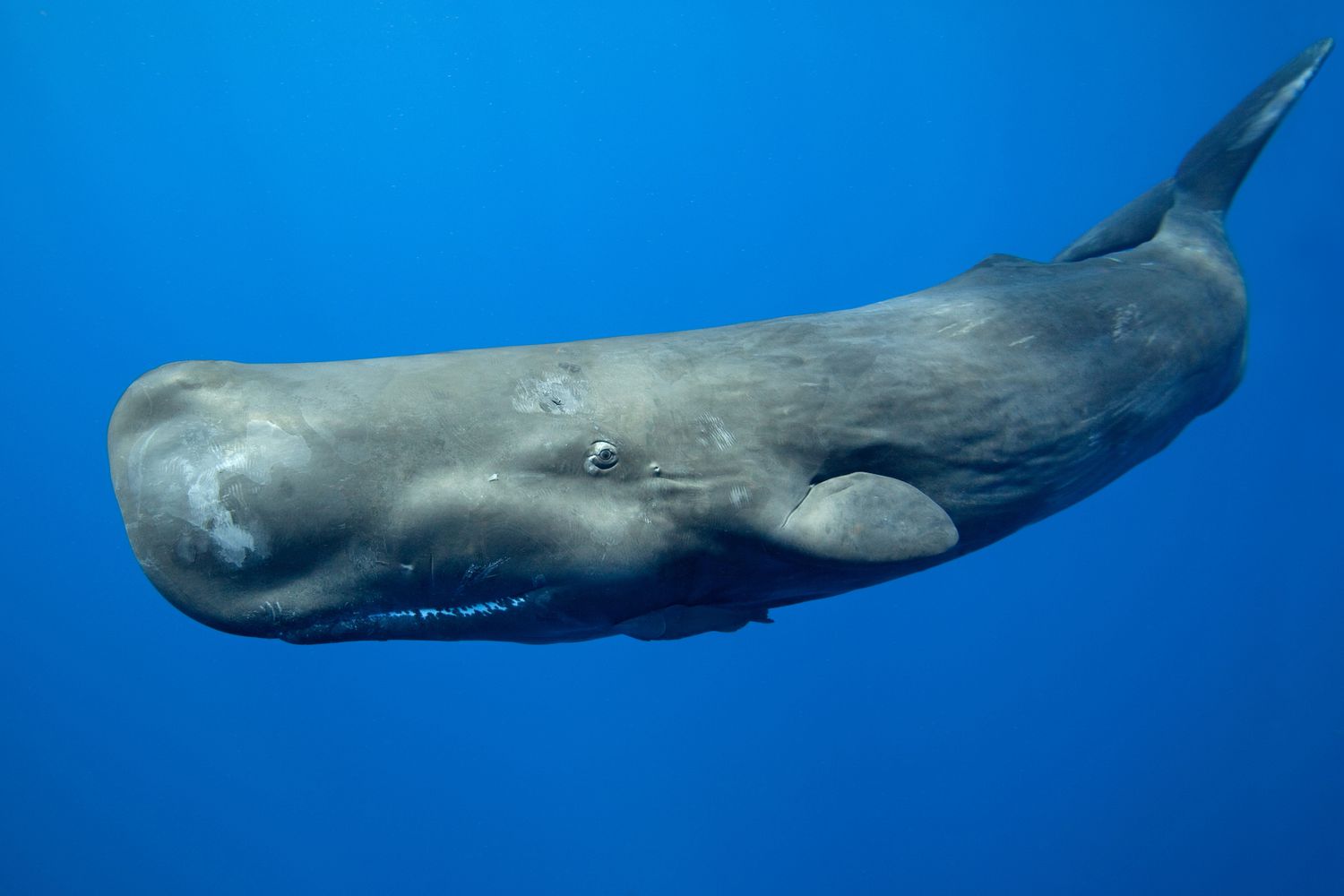
In the vast depths of the world’s oceans, among the mysterious creatures that inhabit the dark abyss, few are as fascinating as the cachalots. These magnificent creatures, also known as sperm whales, are some of the largest predators on the planet. With their massive bodies, unique physical characteristics, and complex social structures, cachalots have captivated the imaginations of scientists and nature enthusiasts for centuries.
In this article, we will uncover 14 intriguing facts about cachalots that will shed light on their extraordinary lives. From their impressive size and powerful jaws to their remarkable communication skills and deep-diving abilities, each fact unravels a different facet of their existence. So, grab your virtual snorkel and dive into the deep sea to discover the secrets of these remarkable creatures.
Key Takeaways:
- Cachalots, also known as sperm whales, are super smart and can dive really deep to hunt for food. They have a big impact on the ocean’s food chain and need our help to survive.
- Cachalots have a matriarchal social structure, with the females in charge. They use cool tactics like bubble net feeding to catch their prey. But they’re facing big challenges and need our protection.
Cachalots are also known as sperm whales.
Cachalots, or sperm whales, are the largest toothed whales in existence, reaching lengths of up to 65 feet and weighing around 50 tons. These magnificent creatures are primarily found in deep waters across all the world’s oceans.
Cachalots have the largest brain of any animal on Earth.
With a brain size of up to 18 pounds, the cachalot possesses one of the most impressive cerebral organs in the animal kingdom. This attribute contributes to their remarkable intelligence and complex social behaviors.
Cachalots are deep divers.
These incredible creatures are capable of diving to astonishing depths of up to 3,280 feet in search of food. They can hold their breath for up to 90 minutes and are known to hunt giant squid in the depths of the ocean.
Cachalots are communicative beings.
Cachalots have a vast repertoire of vocalizations, including clicks, whistles, and songs. These sounds serve various communication purposes, such as locating prey, navigating through their environment, and social interaction within their pods.
Cachalots have a unique head shape.
One distinctive characteristic of cachalots is their large, block-shaped head, which represents about one-third of their total body length. This shape houses a reservoir of spermaceti oil, a waxy substance once highly valued for its use in candles and lubricants.
Cachalots have a diverse diet.
While squid is their preferred food source, cachalots are known to also consume fish, octopuses, and even sharks. Their sharp teeth allow them to grasp and swallow prey whole. A single adult cachalot can consume up to one ton of food per day.
Cachalots exhibit a matriarchal social structure.
Within a cachalot pod, the females take on the dominant roles, with the eldest female typically leading and making key decisions. The males, or bulls, tend to roam alone or form bachelor groups until they reach sexual maturity.
Cachalots have a unique hunting strategy.
When hunting for food, cachalots employ a cooperative tactic known as “bubble net feeding.” They trap prey by creating a net of bubbles emitted from their blowholes, which confuse and corral the fish or squid into a concentrated area, making it easier to catch.
Cachalots have a long lifespan.
These majestic creatures can live upwards of 60 years, with females typically outliving males. The longevity of cachalots allows them to accumulate wisdom and experience within their social groups over time.
Cachalots are known for their unique ivory-like teeth.
The teeth of cachalots are large and conical, resembling ivory. In the past, these teeth were often mistaken for the tusks of land mammals and were highly sought after in the commercial trade.
Cachalots undertake long-distance migrations.
Cachalots are known to embark on extensive migrations, traveling thousands of miles in search of food and suitable breeding grounds. They navigate through the ocean using echolocation, which enables them to communicate and navigate effectively.
Cachalots are an inspiration for literature and art.
These magnificent creatures have captured the imagination of many, inspiring famous literary works such as Herman Melville’s “Moby-Dick.” Their unique appearance and behaviors continue to captivate artists, scientists, and nature enthusiasts alike.
Cachalots play a vital role in marine ecosystems.
As apex predators, cachalots help regulate the population of their prey species, maintaining a delicate balance within the ocean’s food chain. They also contribute to the fertilization of surface waters through the excretion of nutrient-rich waste.
Cachalots face conservation concerns.
Due to historical commercial whaling practices and other factors such as pollution, habitat loss, and climate change, the population of cachalots has drastically declined. Conservation efforts are necessary to ensure the survival and well-being of these magnificent creatures.
Conclusion
In conclusion, the 14 facts about cachalots shed light on the remarkable nature of these incredible creatures. From their immense size and intelligence to their unique behaviors and vital role in marine ecosystems, cachalots continue to captivate our fascination. However, their conservation is crucial to protect these magnificent creatures for future generations.
Conclusion
In conclusion, Cachalots, also known as sperm whales, are fascinating creatures that have captured the imagination of humans for centuries. With their impressive size, unique hunting techniques, and distinct physical features, they are truly remarkable animals. Whether it’s their ability to dive to extraordinary depths, their complex social structures, or their incredible communication skills, there is much to learn and appreciate about these magnificent creatures. As we continue to study and understand Cachalots, we gain deeper insights into the complexity and diversity of marine life. By conserving their habitats and protecting them from threats, we can ensure that future generations can continue to marvel at the wonders of the Cachalot.
FAQs
1. How big do Cachalots get?
Cachalots are the largest toothed whales and can reach lengths of up to 60 feet (18 meters) and weigh as much as 45 tons.
2. What do Cachalots eat?
Cachalots primarily feed on squid, but they also consume fish and occasionally prey on smaller marine mammals such as seals.
3. How deep can Cachalots dive?
Cachalots are known to dive to incredible depths, with recorded dives reaching over 3,000 feet (914 meters). These deep dives can last up to 90 minutes.
4. What is the purpose of the large head of a Cachalot?
The large head of a Cachalot houses a unique organ called the spermaceti organ, which helps the whale control its buoyancy. It also amplifies its clicking vocalizations, allowing for long-range communication.
5. Are Cachalots endangered?
While the global population of Cachalots is not currently considered endangered, certain regional populations are facing threats due to factors such as pollution, overfishing, and habitat loss.
Cachalots, the gentle giants of the sea, never cease to amaze with their incredible adaptations and behaviors. If you're fascinated by these majestic creatures, why not explore more about conservation efforts to protect them and their ocean home? Discover how echolocation helps bats navigate the night sky, just as cachalots use it to find their prey in the deep. And for the young nature enthusiasts, dive into a collection of sperm whale facts tailored just for kids, sparking their curiosity and love for these remarkable marine mammals.
Was this page helpful?
Our commitment to delivering trustworthy and engaging content is at the heart of what we do. Each fact on our site is contributed by real users like you, bringing a wealth of diverse insights and information. To ensure the highest standards of accuracy and reliability, our dedicated editors meticulously review each submission. This process guarantees that the facts we share are not only fascinating but also credible. Trust in our commitment to quality and authenticity as you explore and learn with us.


